When Bryan Jones drives a spade into his soil, he unearths signs of life: earthworm-sized pinholes lace the soil profile, aerating his fields and making pathways for spring rains to soak in. Bryan is a fourth-generation wheat farmer in Whitman County, Washington, near the heart of the Pacific Northwest’s wheat country. He credits his two decades of conservation tillage with bringing the worms back to his family’s farm, after generations of heavy plowing, beginning in his great-grandfather’s day, drove them away.
But without the plow to tear up weeds between plantings, he’s relied more on herbicides for weed control. And those chemicals may be harming the very soil life he’s trying to protect.
Wheat is Washington’s largest crop by acreage, and Washington is among the country’s top wheat producers. While the state’s winter wheat output has increased just 15 percent since the early 1990s, herbicide use has quadrupled: eastern Washington’s winter wheat farmers now spray nearly 2 million pounds of herbicide on their fields every year.
The spread of “no-till” and conservation tillage, largely implemented to combat erosion, has fueled the weedkiller surge. Other factors, like the rapid rise of superweeds and the declining price of the common herbicide glyphosate, have also encouraged chemical application. The heavy reliance on herbicides is a growing concern of regenerative agriculture proponents, who include reduced tillage as a priority practice for soil health.
This summer, Bryan and 12 other farmers in Whitman County tried out a new technology designed to reduce herbicide use. Rather than coating fields evenly with weedkiller, “optical precision sprayers” use light sensors to differentiate weeds from bare soil, firing chemical bursts only on weed patches. The improvement is only recently possible, as optical technology catches up with the human eye.
The high-tech sprayer cut Bryan’s herbicide use by 90 percent, beyond his highest hopes. And he isn’t alone—most users see chemical reductions over 80 percent. This shift could save his farm money, reduce chemical damage to his soil, and cut toxic loads in water runoff into the Snake River.
The high-tech sprayer cut Bryan’s herbicide use by 90 percent, beyond his highest hopes.

The dramatic rise in herbicide application, both in the Pacific Northwest and across the globe, is not a new story. What is new is the technology that could dramatically slash that use almost overnight. Though a food system completely free from synthetic chemicals is ideal for human and environmental health, the path to get there is likely a long one. In the meantime, more efficient spray technology makes a dramatic chemical reduction possible now. Next year’s wheat crop in Washington could require a fraction of the chemical load used for this year’s harvest. With the help of precision sprayers, herbicide use next year could even dip below rates from a quarter-century ago.
The challenge is no longer technological. It’s simply getting existing technology into farmers’ hands.
The promise of precision herbicide sprayers for Cascadia’s farmers
Since adopting conservation tillage, Bryan has experimented with a number of biological means to reduce his chemical reliance, rotating his crops and keeping his soil covered as much as possible to keep weeds down. But the benefits of those practices typically build slowly over years, and may not be enough to fend off the most persistent invaders. For now, he still uses herbicides to preserve his harvests amidst the region’s growing superweed problem.
READ MORE: The Tilling Catch-22: Erosion vs. Superweeds
Precision sprayers represent the type of triple bottom line victory sustainability hawks dream of, benefiting producers, the environment, and the public. Lighter chemical application could reduce the risks herbicides pose to human and environmental health. It could also boost producers’ bottom line. In the last 30 years, herbicides have steadily grown into one of the biggest line items in a farmer’s budget, consuming an ever-greater slice of the thin profit margin most producers depend on.
Optical precision sprayers currently work best on fallow (unplanted) fields, though technology to differentiate weeds from live crops is improving by leaps and bounds. Still, more efficient weed control on fallow fields could be revolutionary in the Pacific Northwest. Over 4 million acres of farmland in the region is routinely left fallow for a year to soak up moisture between plantings. Those fallow periods are prime time for weeds to move in, and that’s when field crop farmers apply the majority of herbicides.
Speeding access
Despite the dramatic success Bryan had with the trial, he says he’s too old to buy new equipment for his farm. It’s expensive and he fears the investment may not be worth it now, as he nears the end of his career. That’s a common story as the average age of Pacific Northwest farmers pushes 60 years old. Meanwhile, most new farmers lack the capital for a major investment.
New optical precision technology costs about $150,000 to install on a standard 100-foot sprayer. The equipment could pay for itself within a few years via reduced chemical expenses, at least on large farms. Still, it’s a big investment for any producer to make, especially in something that is new and perceived as risky. Today, fewer than one percent of wheat farmers in the Pacific Northwest use optical sprayers.
Most farmers are not strangers to borrowing equipment from neighbors, family, or local conservation districts. But high repair costs for precision equipment mean traditional rental arrangements could be financially riskier.
Several Washington conservation districts have leveraged public funds to help producers buy precision sprayers. In Spokane County, the Washington Department of Ecology’s Revolving Loan Fund helped producers finance equipment purchases with low-interest bank loans; farmers are paying back their state loans over five years, with interest.
Whitman Conservation District has a cost-share program that covers 90 percent of the equipment cost through state Conservation Commission funds, leaving producers to come up with the remainder. Unlike loans, producers don’t have to repay cost-share assistance. It’s an unusually generous match for this type of program, but district staff is eager to help farmers overcome the high upfront costs and get the precision sprayers on the ground. So far it seems to be working: farmers in the area have enrolled over 10,000 acres in the program.
Each of the conservation district assistance programs has seen great success, and producer interest far outstrips available funds. Increased public assistance would help disseminate the technology more broadly, growing producer familiarity. As first adopters demonstrate potential savings from reduced chemical costs, more banks may be willing to finance the equipment, and more farmers may be willing to invest in it, speeding uptake.
Slashing next year’s chemical load
Bryan sums up his farming philosophy like this: “I don’t use my grandma’s icebox. It worked great for what it was, but now I have a refrigerator and a freezer.” Producers protecting their soil via conservation tillage while maintaining the “grandma’s icebox” of indiscriminate herbicide sprayers may be taking two steps forward and one back on soil health.
Precision spray technology makes it possible to immediately slash chemical application, reducing risks to human and environmental health, and saving producers money. Though it may not be the ultimate solution to the risks posed by synthetic chemicals in our food system, it represents an opportunity for dramatic improvement. And the benefits could also extend far beyond Cascadia’s field crops. Other precision sprayers can reduce herbicide use by as much as 70 percent in orchards and vineyards.
Lowering the cost barrier for early adopters could help speed the first wave of uptake. As producers see neighbors’ successes, as well as savings, more will likely follow. With the right investment, next year’s apples, alfalfa, barley, pears, and wheat could all require far less herbicide than they did this year.
Thank you to Bryan Jones for sharing his story and reviewing a draft of this article. Thanks also to Washington conservation district staff for providing input on this article.
Margaret Morales is the lead researcher for Sightline’s Farms and Forests program. She received her Master’s from The University of British Columbia’s Institute for Resources, Environment, and Sustainability where she was a Bridge Fellow focusing on issues of public health and the environment. If you’d like to contact Margaret or request an interview, please contact Communications Manager Anne Christnovich.

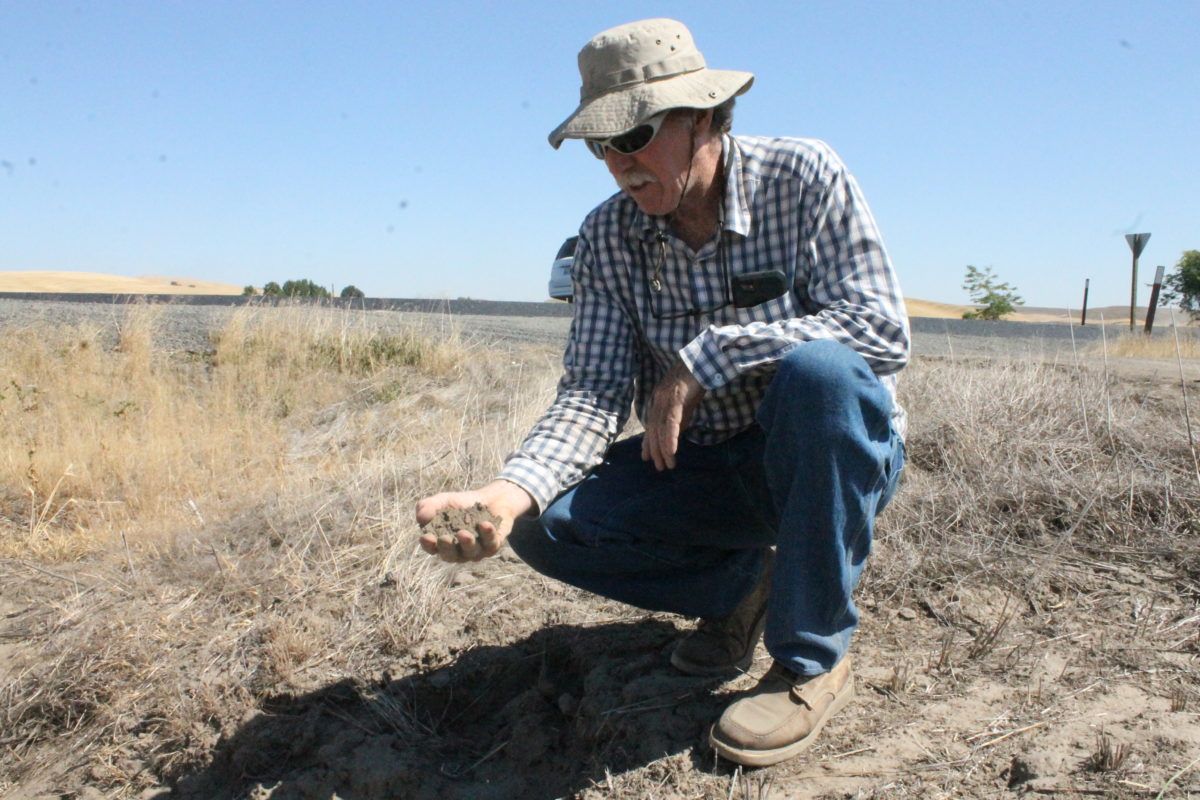
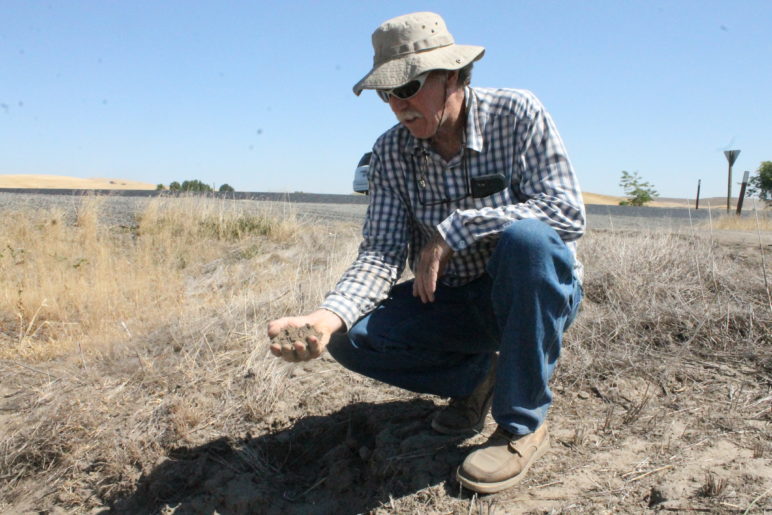


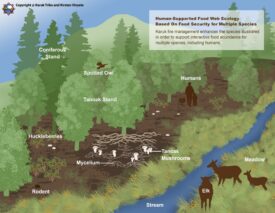
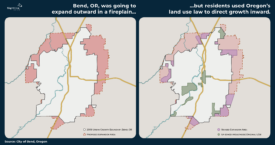
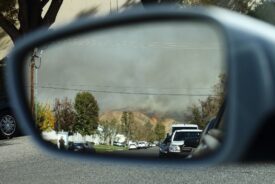

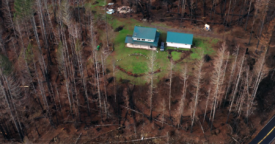

Ray Kinney
What percentage of the herbicide use is for just before harvest application, that can result in much higher chemical food residues?
Bryan Jones
No pre harvest application for me.
M
I was under the impression via David Montgomery who works with farmers to go ‘no-till’ the chemical use was severely reduced if not ended entirely, rendering increased profit for the farmer.
Phil B.
I hope this technology & these techniques spread rapidly! Sounds like an economic/environmental win/win for farmers!
Vincent Seymour
Hi Margret, I’ve a question,
Are the optical sprayers able to discern the difference between ripe grain and almost ripe grain, so as to further reduce the glyphosate use. ???
Regards Vincent Seymour.